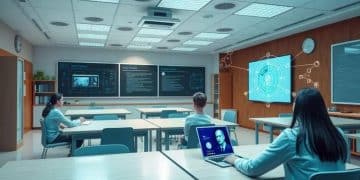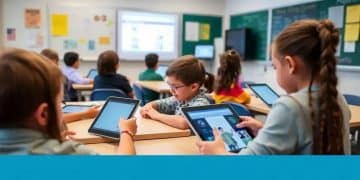Insights on ai in classrooms: transformative learning
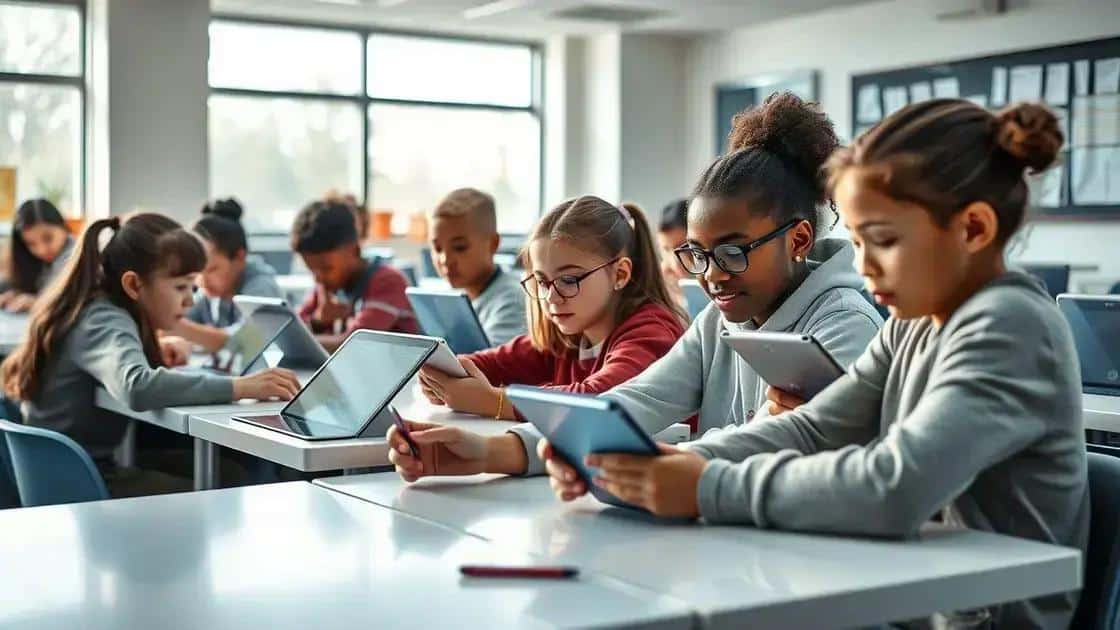
AI in classrooms enhances student engagement through personalized learning, interactive technologies, and immediate feedback, transforming traditional education into a more effective and dynamic experience.
Insights on ai in classrooms are shaping how students learn today. Have you ever wondered how technology can change traditional education? This article dives into the pivotal role of AI in enhancing learning experiences.
Understanding the role of ai in education
In today’s digital age, understanding the role of AI in education is essential. Artificial Intelligence tools are not just a trend; they are changing how students learn and teachers teach.
How AI Personalizes Learning
One significant way that AI impacts education is through personalization. AI systems analyze students’ learning patterns, helping to tailor lessons to their individual needs. This means that each student can learn at their own pace, making the process more effective and engaging.
- Adaptive learning technologies
- Feedback systems for instant improvement
- Custom lesson plans based on performance
Additionally, AI helps teachers manage their classrooms better. With the support of AI tools, teachers can focus more on engaging with students rather than getting bogged down in administrative tasks.
Enhancing Student Engagement
Students are more engaged when lessons incorporate AI technologies. For instance, some classrooms use smart tutors that provide interactive exercises. This kind of engagement keeps students interested and helps them retain information more effectively.
Moreover, the use of gamification in AI applications encourages healthy competition among students. They feel motivated to better their scores and acquire new skills. These tools not only make learning fun but also enhance academic performance.
Challenges and Considerations
Though the benefits are clear, embracing AI in education comes with challenges. Schools must ensure equitable access to AI resources. Not all students may have the same level of access to technology, which could widen the digital divide.
Furthermore, educators must be trained adequately to use these tools effectively. Providing professional development ensures that teachers can maximize the benefits of AI in their classrooms.
Benefits of ai for student engagement
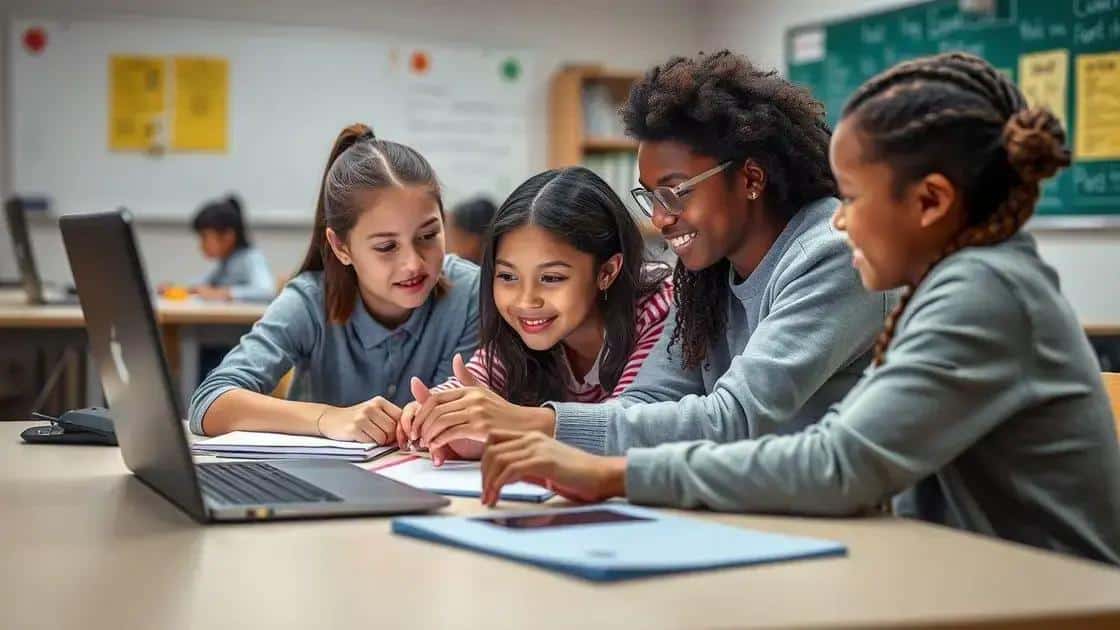
The benefits of AI for student engagement are numerous. By utilizing artificial intelligence, educators can create interactive learning environments that draw students in. These tools not only make learning more enjoyable but also help students grasp complex concepts more effectively.
Interactive Learning Tools
AI-powered platforms often feature interactive elements that capture students’ attention. For example, simulations and games can be integrated into lessons, making the material more relatable. When students participate in gamified learning, they are more likely to stay engaged and motivated.
- Adaptive quizzes that adjust difficulty
- Interactive video lessons that allow choices
- Virtual reality experiences for deeper understanding
Additionally, AI helps identify individual learning styles. This enables teachers to tailor their approaches to meet different needs. With the right tools, lessons can become more relatable and effective for each student.
Positive Feedback and Motivation
One of the best features of AI in education is its ability to provide instant feedback. Students receive immediate responses on their performance, allowing them to understand their mistakes and improve quickly. This immediate reinforcement keeps students motivated to learn.
Moreover, AI can track progress over time, helping students set and reach personal goals. When students can see their growth, they feel a sense of accomplishment. This positive reinforcement nurtures a desire to continue learning.
Collaborative Learning Opportunities
A strong benefit of AI is enhancing collaborative learning experiences. AI tools can connect students across distances, enabling peer interaction in real-time. Platforms that allow for shared projects enable students to work together, learn from each other, and develop essential teamwork skills.
Through these platforms, students can exchange ideas, receive feedback, and partake in meaningful discussions. This environment fosters a sense of community, significantly enhancing the overall learning experience.
Real-life examples of ai in classrooms
Real-life examples of AI in classrooms showcase how technology can enhance education today. Various schools around the world are implementing artificial intelligence solutions to improve learning outcomes.
Personalized Learning Platforms
One popular example is the use of personalized learning platforms. These platforms analyze each student’s performance and adapt lessons accordingly. Many schools have adopted systems like DreamBox and Knewton, which adjust the difficulty of math problems based on real-time student responses.
- DreamBox provides individualized learning paths in mathematics.
- Knewton offers adaptive learning that tailors lessons to student needs.
- Platforms like IXL track progress and suggest areas for improvement.
These tools make lessons more engaging and help students learn at their own pace. Teachers often report increased student motivation and better understanding of the material when using such platforms.
AI-Assisted Teaching Tools
Another example is the use of AI-assisted teaching tools like Socrates. This AI-driven platform helps teachers create quizzes and assessments efficiently. Instead of manually grading, educators can use AI to provide instant feedback to students. It saves valuable time and allows teachers to focus on classroom interaction.
Furthermore, AI can assist in language learning through applications like Duolingo. This app uses AI algorithms to adapt its lessons based on users’ strengths and weaknesses, keeping learners engaged and making practice enjoyable.
Smart Classrooms
Some schools are transforming their traditional classrooms into smart classrooms. These setups include AI-powered tools that help manage and facilitate lessons. For instance, hardware like smart boards allows for interactive lessons. They can integrate with various software to display real-time information and analytics, making the learning experience more dynamic.
In addition, systems that enhance collaboration among students are emerging. Tools like Microsoft Teams and Google Classroom provide platforms for group work and discussions, allowing students to communicate effectively even outside the classroom.
Future trends of ai in education
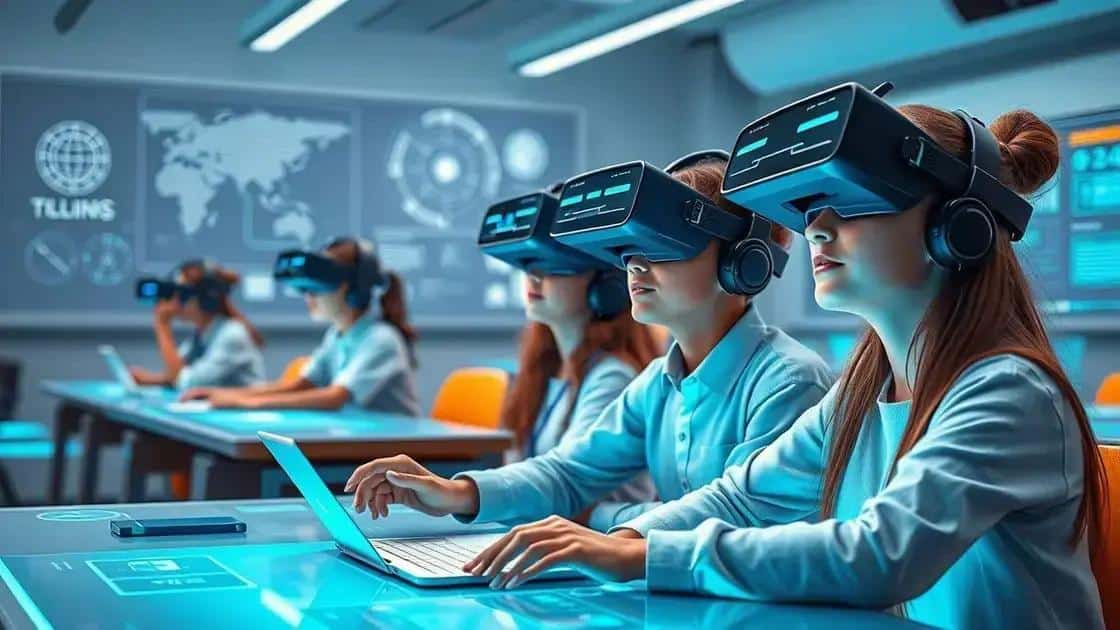
The future trends of AI in education promise exciting developments. As technology evolves, the role of artificial intelligence in classrooms will become even more significant.
Increased Personalization
One major trend we can expect is increased personalization in learning. With advanced algorithms, AI will tailor educational content to meet each student’s unique needs. This means that no two learning paths will be alike, which can help students grasp concepts more effectively.
- Adaptive learning platforms will refine their recommendations.
- Real-time analytics will help track student progress.
- Content will be tailored using AI insights on learning styles.
Such personalization will encourage students to take charge of their own learning journeys, leading to higher engagement and success rates.
Integration of Virtual and Augmented Reality
Additionally, AI combined with virtual and augmented reality will create immersive learning experiences. Imagine exploring historical sites or complex scientific concepts in a virtual environment. This fusion of AI and VR will help students visualize lessons, making learning interactive and enjoyable.
Furthermore, these tools can simulate real-world scenarios. For instance, students studying botany can explore a virtual forest, while those in a medical course can practice surgeries in a safe virtual space. The possibilities are endless.
Data-Driven Insights for Educators
Another future trend involves using AI to provide data-driven insights for educators. AI will analyze vast amounts of data, helping teachers understand which strategies work best for their students. This feedback can guide instruction and improve lesson plans.
Teachers will have access to dashboards that highlight student performance trends, allowing them to intervene sooner when a student struggles. This proactive approach can lead to improved learning outcomes.
FAQ – Frequently Asked Questions about AI in Education
How does AI personalize learning for students?
AI analyzes individual student performance to tailor lessons that match their learning styles and needs.
What are some examples of AI tools used in classrooms?
Examples include personalized learning platforms like DreamBox and assessment tools like Socrates that provide instant feedback.
How can AI enhance student engagement?
AI creates interactive learning experiences through gamification and virtual simulations, making lessons more enjoyable.
What future trends can we expect with AI in education?
Future trends include greater personalization, integration of immersive technologies, and data-driven insights for educators.
